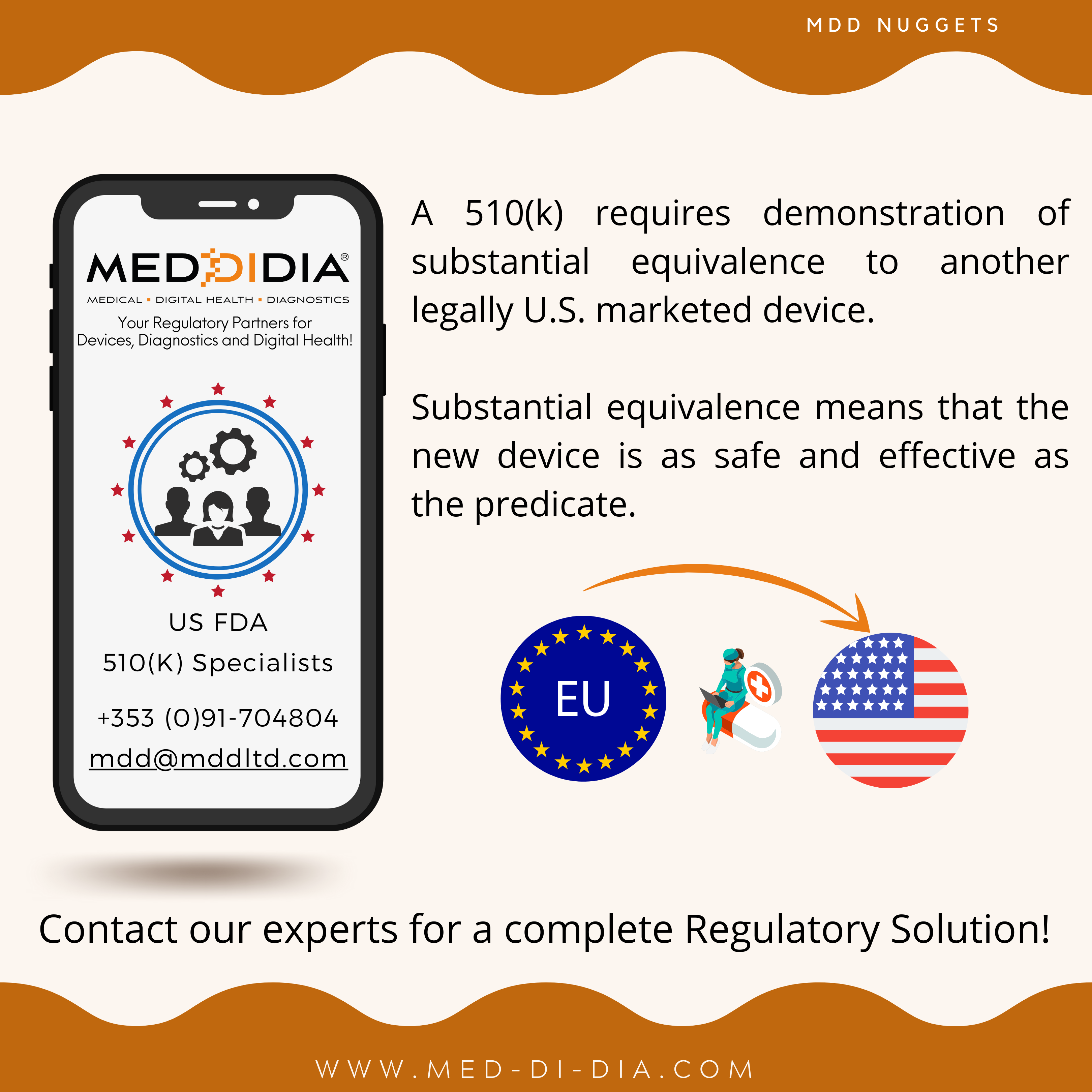Substantial Equivalence in 510(k)
A 510(k) is a premarket submission made to FDA to demonstrate that the device to be marketed is as safe and effective, that is ‘substantially equivalent’, to a legally marketed device (section 513(i)(1)(A) FD&C Act).
Submitters must compare their device to one or more similar legally marketed devices and make and support their substantial equivalence claims.
What is Substantial Equivalence?
Since a 510(k) requires comparing the device, the process of substantial equivalence means that the new device is as safe and effective as the predicate (previous device). A 510(k) requires demonstration of substantial equivalence to another legally US marketed device.
A device will be considered substantially equivalent in comparison to a predicate if it:
- - Has the same intended use as the predicate; and
- - Has the same technological characteristics as the predicate
Or
- - Has the same intended use as the predicate; and
- - Has different technological characteristics, not raising questions of safety and effectiveness; and
- - The information submitted to FDA demonstrated that the device is as safe and effective as the legally marketed device.
This claim of substantial equivalence doesn’t mean that the new and predicate devices need to be identical.
- The US FDA first:
establishes that the new and predicate devices have the same intended use and any differences in technological characteristics do not raise different questions of safety and effectiveness.
- Then:
they determine whether the device is as safe and effective as the predicate device by reviewing the scientific methods used to evaluate differences in technological characteristics and performance data.
This performance data can include Clinical and Non-Clinical bench performance data including:
- - Engineering performance testing
- - Sterility
- - Electromagnetic compatibility
- - Software validation
- - Biocompatibility evaluation and other data
A device may not be marketed in the US until the submitter receives a letter finding the device substantially equivalent. If FDA determines that a device is not substantially equivalent, the applicant may:
- - resubmit another 510(k) with new data,
- - request a Class I or II designation through the De Novo Classification process,
- - file a reclassification petition, or
- - submit a premarket approval application (PMA).
Why wait until rejection?
Contact our experts and reduce your regulatory risk by choosing us as your partners!
Send us an email at mdd@mddltd.com








